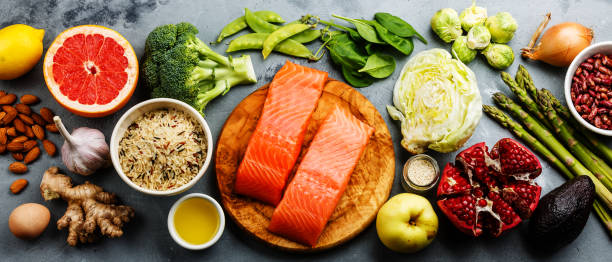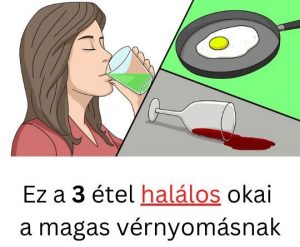Best Foods to Eat if You Have Diabetes and High Blood Pressure

So if you have both diabetes and hypertension, it's important to follow a meal plan that manages both conditions and reduces your risk of further health complications. Jo-Anne Rizzotto, RDN and director of educational services at Harvard's Joslin Diabetes Center, typically recommends the DASH diet (which stands for Dietary Approaches to Stop Hypertension) for people with both complications.
One of the most important components of the DASH diet is reducing sodium intake: Salt causes the body to retain water, which raises blood pressure, accordingto the American Heart Association (AHA). But it's not just about eating less salt. A well-balanced diet is critical for your overall good health.
That's why the DASH diet is rich in fresh vegetables, fruits, whole grains, lean proteins, nuts and legumes including nutrients that are linked to lower blood pressure, including potassium, calcium, magnesium and fiber. The plan is also low in sodium and processed foods. So consider stocking up on this food list for diabetes and high blood pressure during your next grocery run.
1. Fruits and Vegetables
Fruits and vegetables provide the body with rich amounts of vitamins, minerals, antioxidants and fiber. Richly colored green, orange and red vegetables are par
ticularly good choices because these foods contain lots of potassium and other minerals that help lower blood pressure, according to the Cleveland Clinic.
The American Diabetes Association specifically recommends nonstarchy vegetables such as broccoli, asparagus, cauliflower and leafy salad greens because they're low in sugar and starches, which can spike blood sugar. Another added benefit of eating more non-starchy veggies: They contain fiber, which is essential for people with diabetes as it slows the body's ability to convert food into glucose, which helps to prevent blood-sugar spikes.
Fiber-rich foods aren't just good for blood-sugar control. According to the Mayo Clinic, dietary fiber — especially soluble fiber — can help lower blood cholesterol levels, which, in turn, can reduce both blood pressure and inflammation.
But fiber also contributes to a feeling of fullness — and that can help prevent cravings and therefore lower your calorie intake for the rest of the day. Sounds like a double whammy against weight gain, too, right?
Fruits and starchy vegetables (squash, potatoes, lentils, beans) are less blood sugar-friendly because they contain carbs; however, they still contain fiber, which reduces their effect on blood sugar. The bottom line: These foods are still good options for people with diabetes, but should be enjoyed in moderation.
2. Low-Fat Dairy
Calcium-rich foods such as low-fat milk and yogurt can help reduce blood pressure, according to the Cleveland Clinic. Plus, low-fat dairy specifically is linked to lowering systolic blood pressure, per the U.S. National Library of Medicine.
However, keep in mind that non-fat dairy can raise blood sugar levels for some people because the lack of dietary fats means the food is metabolized more quickly than its full-fat counterparts, says Cara Schrager, RDN, a certified diabetes educator at the Joslin Diabetes Center.
But the way people respond to dairy is very individualized, notes Schrager. "Drinking a cup of skim milk may not affect blood sugar levels. It really depends on the foods that comprise the rest of the meal." Case in point: Eating well-balanced meals is critical to maintaining stable blood sugar levels.
If you're lactose intolerant, have a dairy sensitivity or are following a vegan diet, plant-based beverages can be a healthy alternative to milk and yogurt — just make sure they're enriched with calcium if you want to get similar benefits. It is the calcium in dairy that is a key feature for DASH diets. "Soy can be a good option," notes Rizzotto. "It has seven grams of protein per serving, so it's similar to milk, which has eight grams." Nut milks, however, contain much less protein.
3. Lean Proteins
Increasing your protein intake can actually help lower your blood pressure, according to the American College of Cardiology. Plus, high-protein foods such as meats, poultry, seafood and tofu are all carb-free, which already deems them A-OK for people with diabetes.
However, you have to be picky about the cut you cook. Fatty meats including beef, lamb and poultry with the skin on all contain saturated fat, which is linked to heart disease, per the AHA.
Instead, opt for skinless white-meat chicken or turkey over dark meat. Fish and tofu are also good lean-protein choices. In fact, a March 2012 American College of Cardiology study found that the isoflavones in tofu may actually help lower blood pressure.
4. Nuts and Seeds
Nuts and seeds are both good food choices for people with high blood pressure and diabetes. These foods are high in protein and healthy fat yet low in carbs, deeming them filling and nutritious.
Nuts and seeds also contain a number of minerals that help lower blood pressure, according to the Cleveland Clinic. Flaxseeds are a particularly good option: According to a study published in the December 2013 issue of Hypertension, eating flaxseeds can significantly reduce blood pressure.
Note that many nuts and seeds come pre-salted. Be sure to select unsalted options, so as not to exacerbate high blood pressure.
5. Whole Grains
Although whole grains are primarily made up of carbohydrates, they should still be a vital part of any diabetes- and blood pressure-friendly diet plan. In fact, eating whole grains is linked to lower blood pressure numbers, according to the Mayo Clinic.
Unlike refined grains (think white bread and white rice), which have been stripped of most of their nutritional value, whole grains (think brown rice, quinoa, buckwheat and barley) are high in fiber, vitamins and other minerals. As mentioned, fiber slows the digestion of food, which helps keep blood sugar stable — a win for people with diabetes.
best food for high blood pressureBest Foods for Hypertensionblood pressure and diabetesDiet for Lowering Blood Pressuredietary approach to stop hypertensioneat heart healthygood food for healthy lifeLifestyle Modifications to Reduce Blood PressureLifestyle Tips to Control Blood Pressurenatural foods for hypertensionNatural Hypertension Remedy






